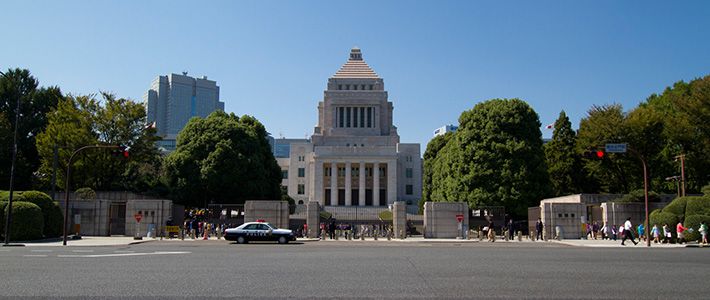
Abenomics and the Government’s New Growth Strategy
Politics- English
- 日本語
- 简体字
- 繁體字
- Français
- Español
- العربية
- Русский
The autumn session of the Diet convened on October 15, 2013. The extraordinary session is expected to run until early December, as members work to hammer out a budget for the next fiscal year, beginning in April 2014.
Abe Shinzō, the prime minister, has called this session the “Growth Strategy Implementation Diet.” The government will look to pass several important pieces of legislation. One of these would approve plans to start a new state security body similar to the National Security Council in the United States. Debate on this proposal has been ongoing for some time. The government has also submitted legislature designed to strengthen Japan’s industrial competitiveness, which it sees as essential to the success of the “Abenomics” program. As part of this, the government will try to get the Diet to approve lower taxes on capital investment.
The government’s “Japan Revitalization Strategy” was approved by the cabinet in June. Designed to be the “third arrow” of the prime minister’s “Abenomics” program, the strategy comprises three broad action plans, along with some concrete targets and measures to bring them about. A government website provides the following English translations for the three main pillars of the strategy: (1) Plan for the Revitalization of Japanese Industry, (2) Strategic Market Creation Plan, and (3) Strategy of Global Outreach.
On October 1, the cabinet officially announced that the rate of the consumption tax will increase next April, from 5% to 8%. At the same time, the government said it would take the necessary measures to ensure that the hike does not throttle economic growth. Opposition parties will look to harry the government on its economic policies and press it to be more proactive in responding to the leaks of radioactive water at the crippled nuclear power plant in Fukushima.
Highlights of the Government’s New Growth Strategy (Japan Revitalization Strategy)
| Growth Strategy: Aims and Targets | Three main “arrows” make up the government’s plan to revitalize the Japanese economy: (1) bold monetary relaxation, (2) flexible application of fiscal stimulus, and (3) a growth strategy for arousing private investment. Together, these policies aim to bring the economy out of its long deflationary spiral. The government is targeting average nominal GDP growth of approximately 3% for the next 10 years, and an average of 2% growth in real GDP. The aim is for an increase of at least ¥1.5 million in per capita gross national income in ten years’ time. |
| Area | Main growth targets included in the Japan Revitalization Strategy |
|---|---|
| Private sector revitalization |
|
| Business environment |
|
| Commerce and globalization |
|
| Agriculture, forestry, and fisheries |
|
| Employment, women’s issues, training |
|
| Energy |
|
| Healthcare and medicine |
|
(Compiled by Nippon.com based on the Japan Revitalization Strategy decided at a cabinet meeting on June 14.)